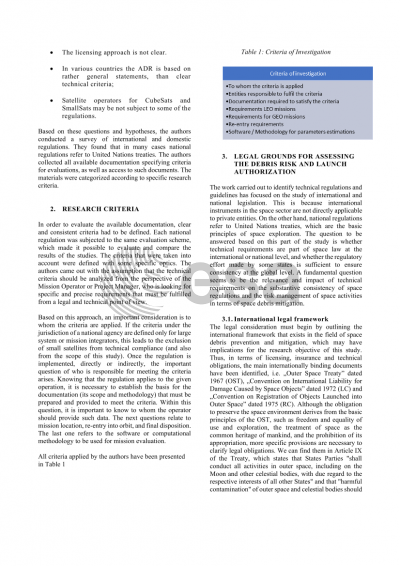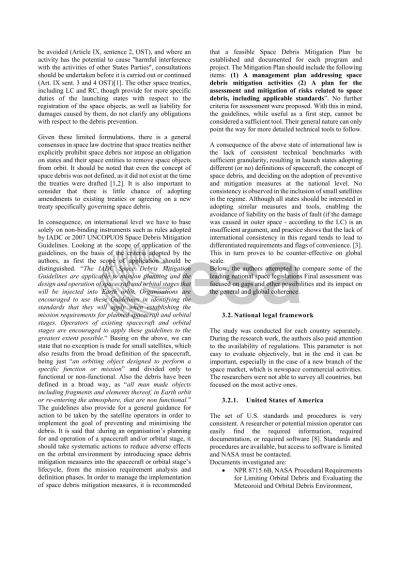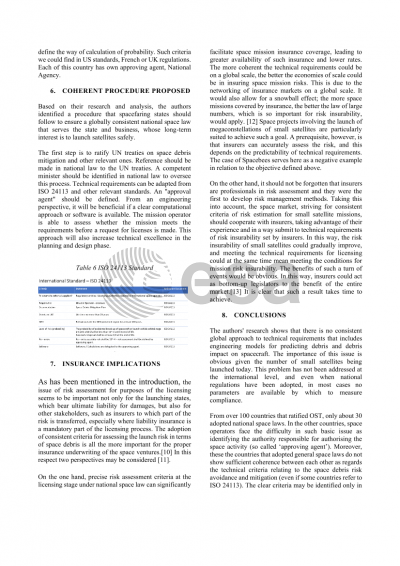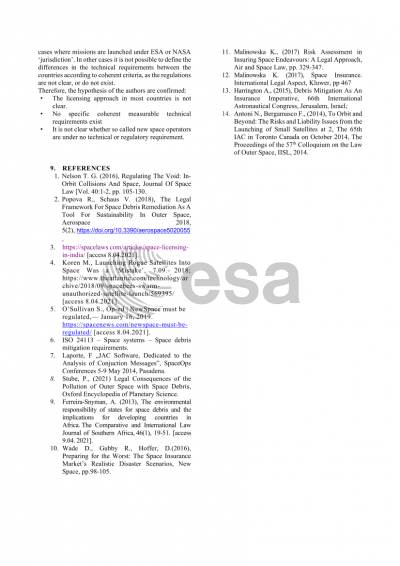Document details

Abstract
The problem of space debris became a matter of concern for the international space community a few years ago, when Dr David Kessler presented his vision of Cassandran, known as Kessler's syndrome. It is clear to all researchers in this area that space law, which is becoming an increasingly important aspect of our lives from year to year, does not meet the needs of time and technological development. The only achievement in combating space debris following the adoption of the space treaties are soft-law measures such as the guidelines developed by IADC and COPUOUS and others of a similar nature. Although they are useful as a first step, they cannot be regarded as a sufficient tool. Their general nature can only indicate the path to be followed by much more specific technical tools, without which they will remain only an ambitious manifesto. The task of regulating technical requirements has been undertaken by some countries. Is it sufficient? The fundamental question is therefore about the importance and impact of technical requirements on the material consistency of space regulations and the risk management of space activities in terms of reducing space debris.
The aim of the authors is to examine developments in this area, based on the space laws and technical measures adopted by some countries. The analysis undertaken by the authors focuses on the engineering standards of risk modelling expressed in the form of software tools developed by certain countries, such as the USA, the United Kingdom, France and, finally, ESA. The aim of the authors is to analyse the consistency of these standards and their impact on the effectiveness of space debris prevention measures. A side issue, but equally important is the impact of the diversity of engineering standards on space law, such as the issue of convenience flags, etc., space insurance and others.
These two issues, taken together, give authors a clear view of future needs and approaches to risk assessment, definition of the alert code and final certification of launch. The authors take the view that nationalisation of the criteria for certification of compliance should not take place, due to the inherently international parameters of the risk related to debris, where even consistent national rules can give significantly different results depending on the technical risk assessment tools applied.
The issue of risk assessment examined by the authors seems to be important not only for the launching states, which bear ultimate liability for damages, but also for other stakeholders, such as insurers to which part of the risk is transferred, especially where liability insurance is a mandatory part of the licensing process). The adoption of consistent criteria for assessing the launch risk in terms of space debris is all the more important for the sustainable development of space exploration, the more numerous small satellites are launched.
Preview








